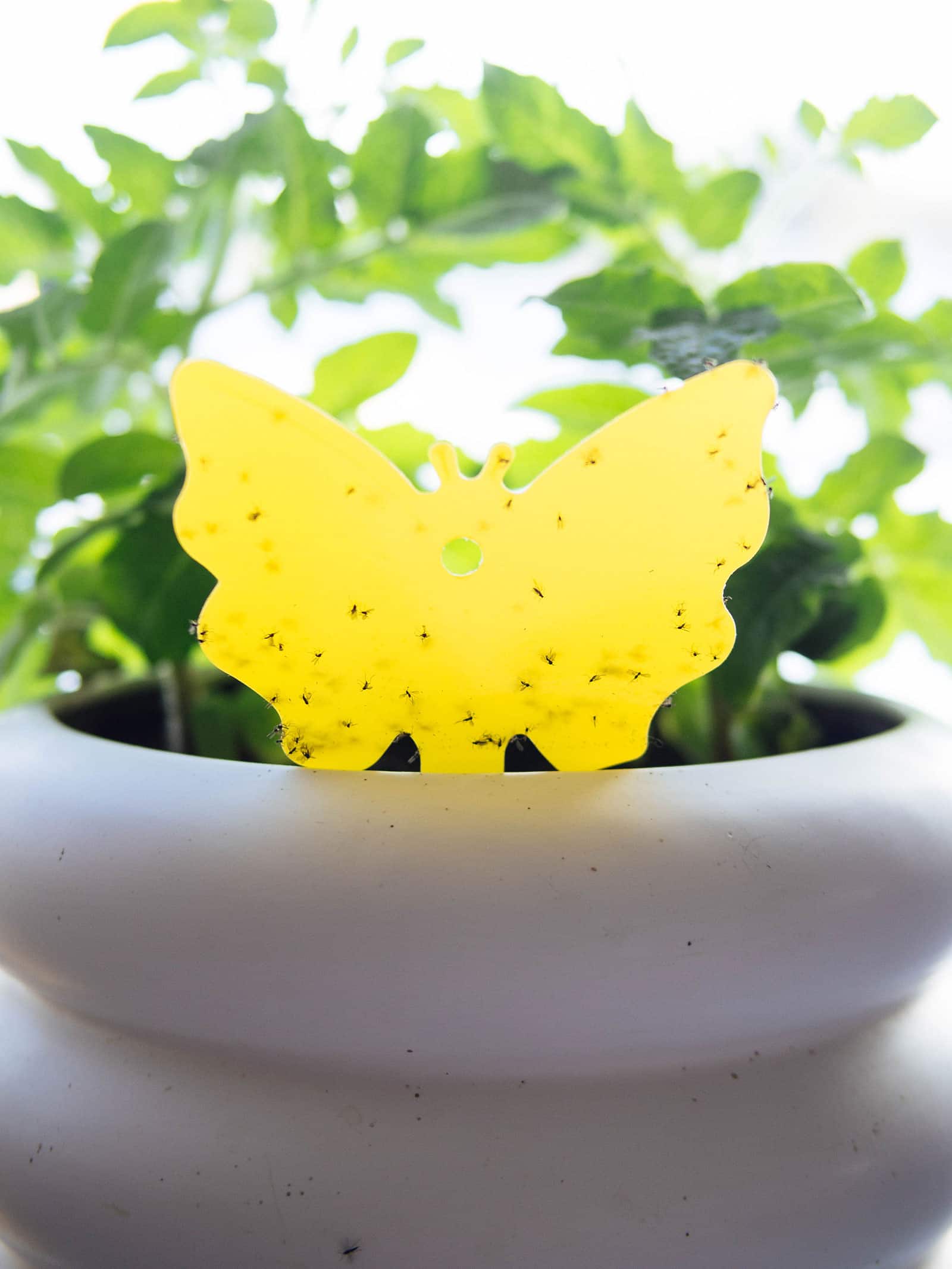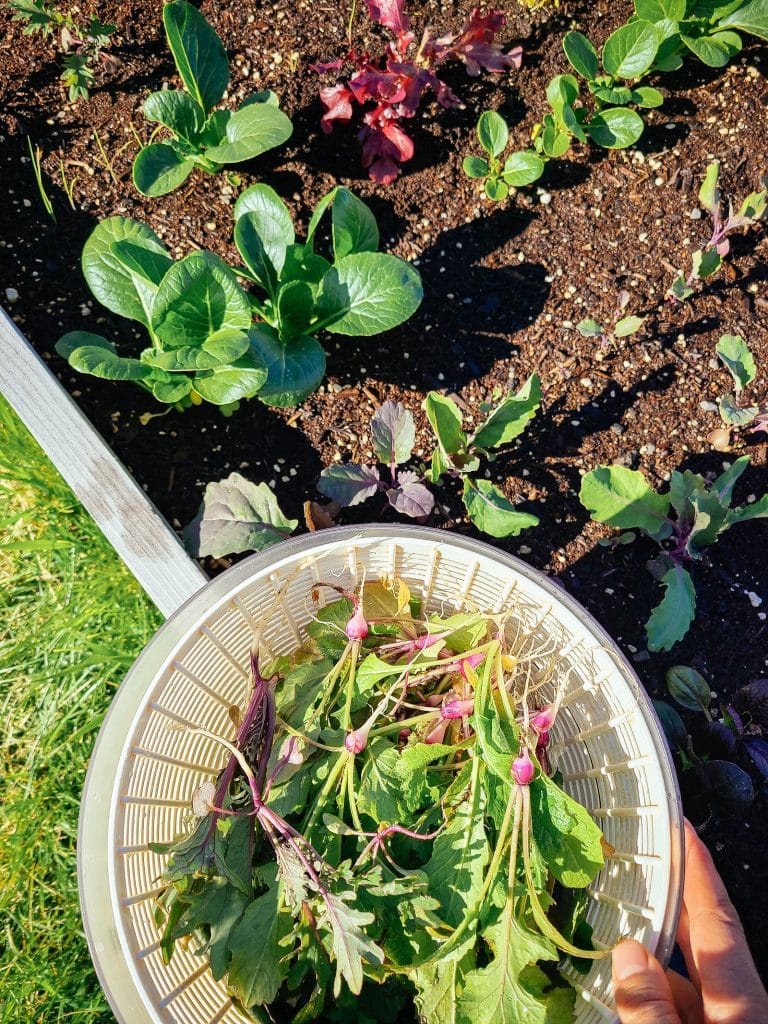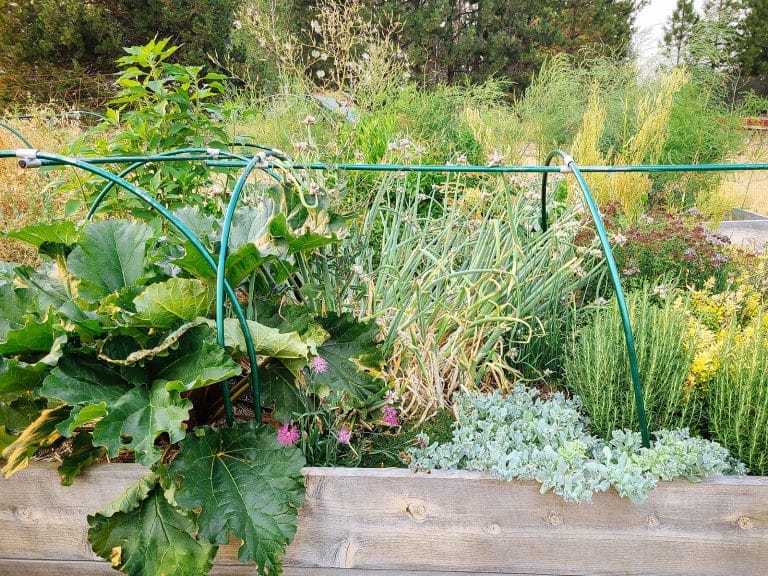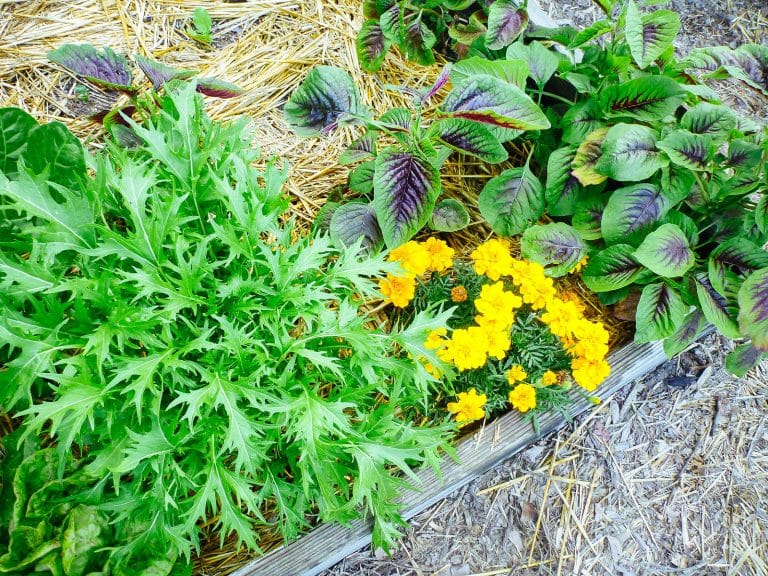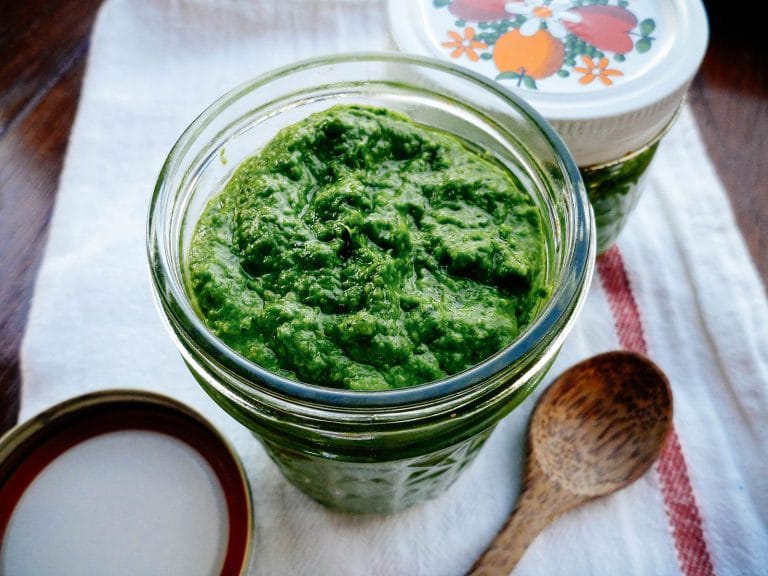It’s the most annoying thing: You bought a beautiful plant, found a good spot in your home for it, and seemingly did everything right to keep it nice and healthy.
Then suddenly: little flies everywhere!
Bugs are the bane of every houseplant lover’s existence, and fungus gnats (also referred to as houseplant gnats) are among the most irritating of all.
What causes fungus gnats to appear in your plants? How can you prevent them? And what should you do if the little menaces have already managed to take over your greenery?
I’ve been there, and I totally know how it feels! Keep reading and I’ll fill you in on everything you need to know about fungus gnats, what causes them, how you can prevent them (because prevention is key to stopping them in the first place), and finally, how to get rid of them—for good!
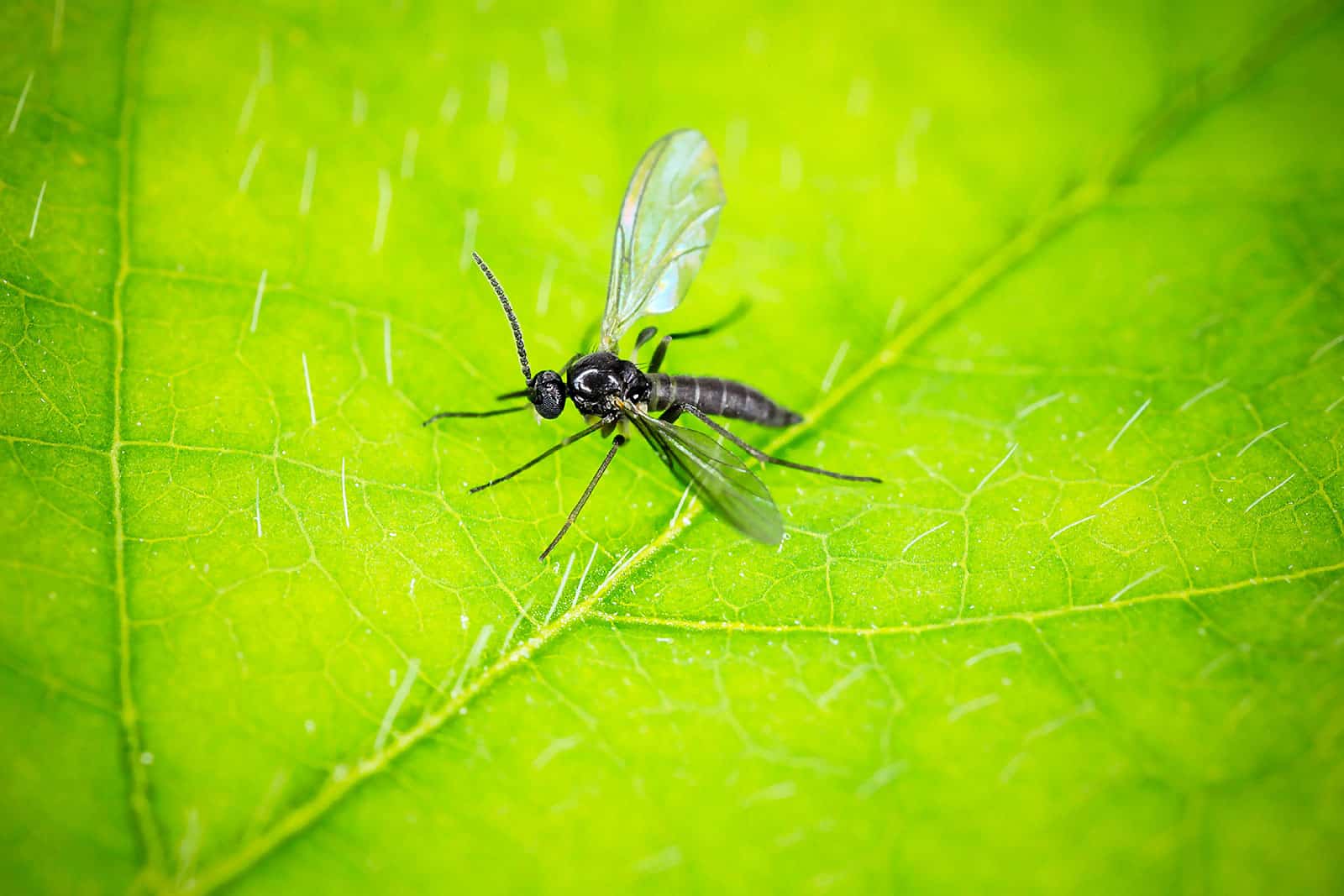
What are fungus gnats, anyway?
The term “fungus gnat” doesn’t just refer to one species. It’s a common name used for a whole bunch of tiny fly species in the superfamily Sciaroidea, the larvae of which feed on fungi and organic material in the soil (hence the name).
There are many fungus gnat species, all more or less similar:
- Usually no more than 0.2 inches or so long
- Look a little like miniature mosquitoes or skinny fruit flies
- Slow fliers, often seen walking over soil and plants instead
- Only live for around two weeks
Although fungus gnats can play an important role in soil health and decomposition in nature—and the adults are little more than an innocent nuisance—they unfortunately don’t mind raising their larvae in our houseplants’ soil.
This is the part that causes issues for your plants, as baby gnats will eat a range of organic material, including plant roots.
The presence of fungus gnat larvae won’t cause a healthy houseplant to keel over and die, but they can weaken it over time. Roots become susceptible to bacteria and disease as a result of being gnawed on, giving pathogens a chance to enter and wreak havoc.
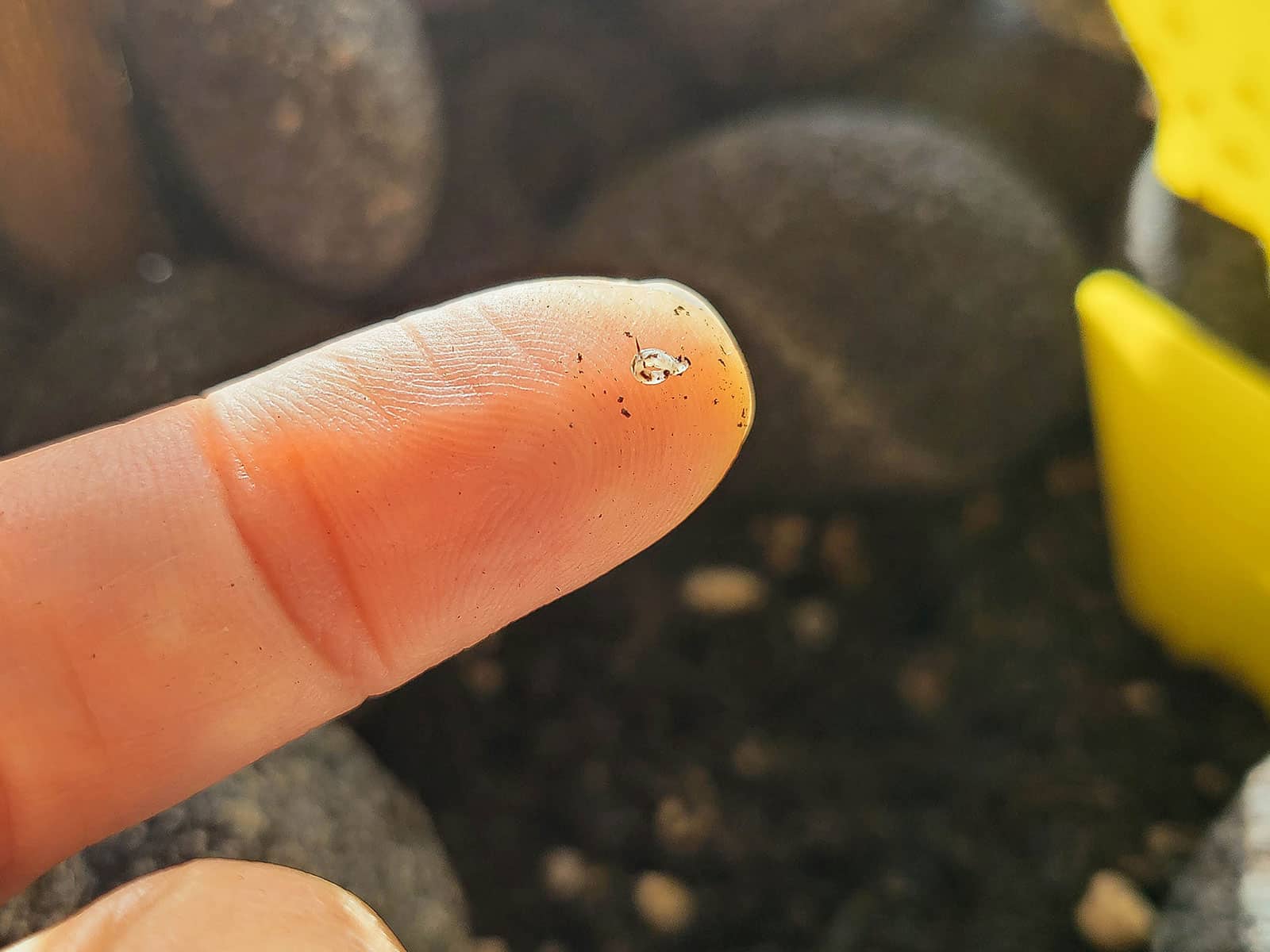
What causes fungus gnats?
So how did your houseplant go from being delightfully free of flies to ending up completely infested?
Well, fungus gnats are the kinds of insects that are almost always around to some degree, and in my experience, they tend to show up after I’ve repotted plants and introduced new potting soil (even if it’s a high-quality soil from a reputable source). But, there are certain things that can cause them to take over your plants.
When it comes to houseplants, the absolute number one cause of fungus gnats is overwatering (or lack of drainage, which is basically the same thing).
As I’ve mentioned here on the blog before, most people lean towards overwatering their houseplants. I’d even venture the say it’s the number-one cause of death for our precious indoor greenery!
Fungus gnat larvae thrive in damp conditions for two reasons.
The first is that moist soil is the perfect environment for the adults to lay their eggs, and for the larvae to hatch and develop without drying out.
Secondly, fungus gnat larvae love wet soil because fungi do. (It’s in their name for a reason!) The whole thing is like a baby gnat buffet, with the combination of moisture and plenty of decaying organic material allowing spores to grow explosively. That means lots of larvae make it to adulthood to lay their own eggs in the same soil, eventually leading to a population explosion if nothing is done.
If you’re dealing with a fungus gnat infestation, don’t panic. As far as bugs go, they’re among the least damaging and persistent ones (it’s mealybugs and spider mite infestations that really get my blood boiling). There are plenty of things you can do to help rid your plants of them forever.
Disclosure: If you shop from my article or make a purchase through one of my links, I may receive commissions on some of the products I recommend.
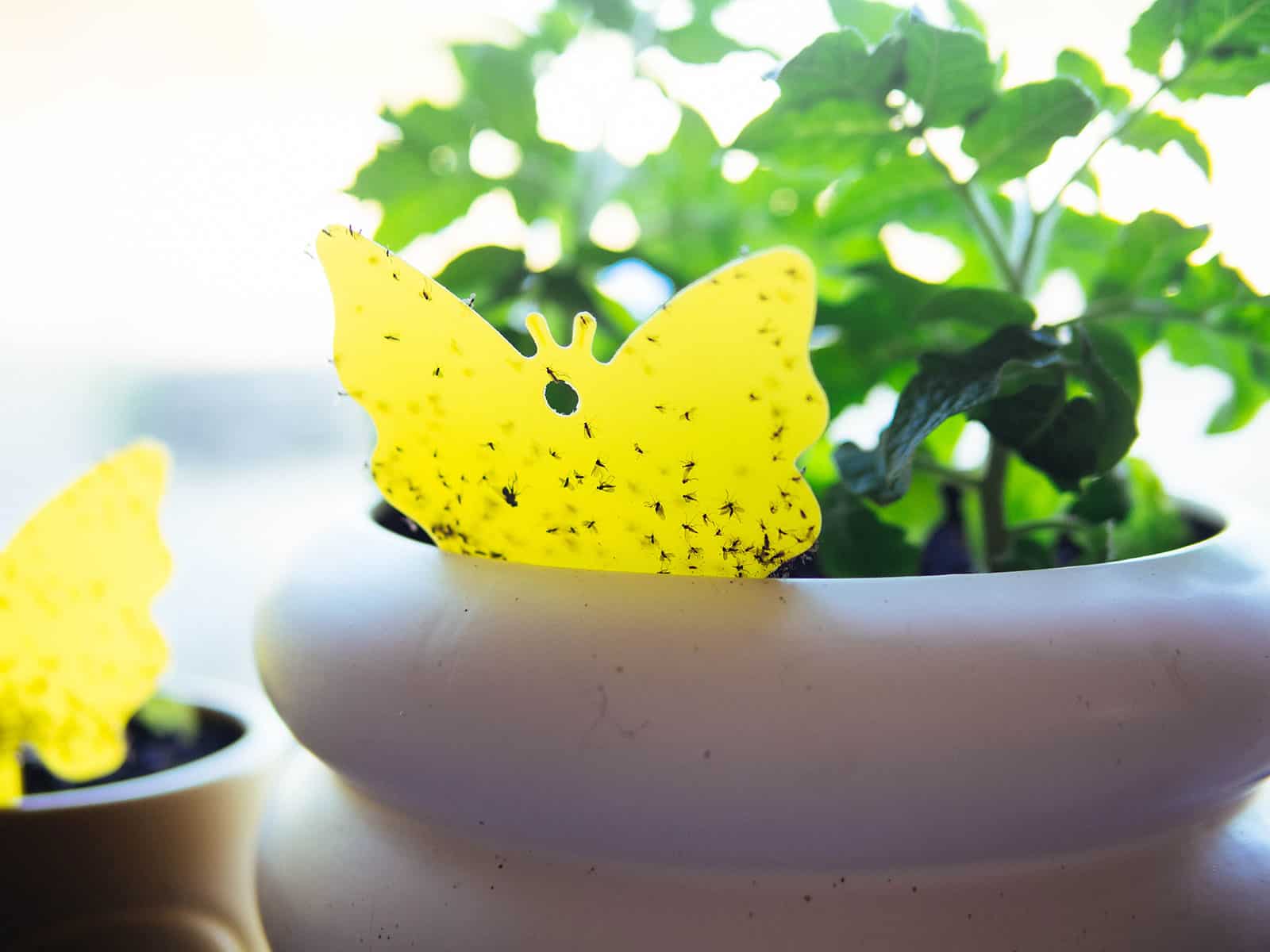
How to eliminate houseplant gnats
From personal experience, you can easily get rid of houseplant gnats within a couple weeks, especially if you combine methods that target both the adults and the larvae to put a stop to their reproductive cycles.
For example: sticky traps to kill adult gnats, plus hydrogen peroxide to eliminate larvae in the soil.
Before we start, if you haven’t already done so, separate any gnat-infested plants from your other houseplants for now to keep the infestation from spreading.
1. Adjust the amount of water you use.
Seriously, I can’t stress it enough: overwatering = gnats.
Take a good look at your houseplants’ soil. Are you an overwaterer? You’re not alone, as most of us have a tendency to water a bit too much (especially in winter, or in rooms that don’t have a lot of direct sunlight).
The first few inches of soil should be allowed to dry out regularly, your planters should have a drainage hole, and the soil should be well-draining.
Also, check whether your plants are getting enough light. If they don’t, they can’t really use the water you give them. This causes the soil to stay damp for too long. Almost all plant species (aside from a select few plants that tolerate low light) should be directly in front of a window or under a grow light.
2. Cover any bare soil.
One simple trick to help prevent fungus gnats from laying their eggs is to block their access to the soil. You can do this by putting a shallow layer of pebbles, marbles, shells, aquarium gravel, or other decorative stones on top of the soil.
Usually you see this done with cactus and succulent planters, but it works for all potted plants!
It’s important to remember that you really need to be able to control your watering routine if you go this route. Covered soil dries more slowly, and it becomes harder to keep an eye on the moisture level.
Still, it’s worth a shot and is much more attractive than bare soil.
3. Use sticky fly traps around infested plants.
Sticky traps really do work—not to resolve the underlying issue that allows fungus gnat larvae to thrive in your plants’ soil, of course, but at least to reduce the amount of fungus gnats buzzing around your plants.
You can place one small sticky trap in each planter, or up to three sticky traps for larger containers (such as indoor trees). This helps catch any freshly metamorphosed fungus gnats right as they crawl out of the soil, preventing them from laying their own eggs and continuing the cycle.
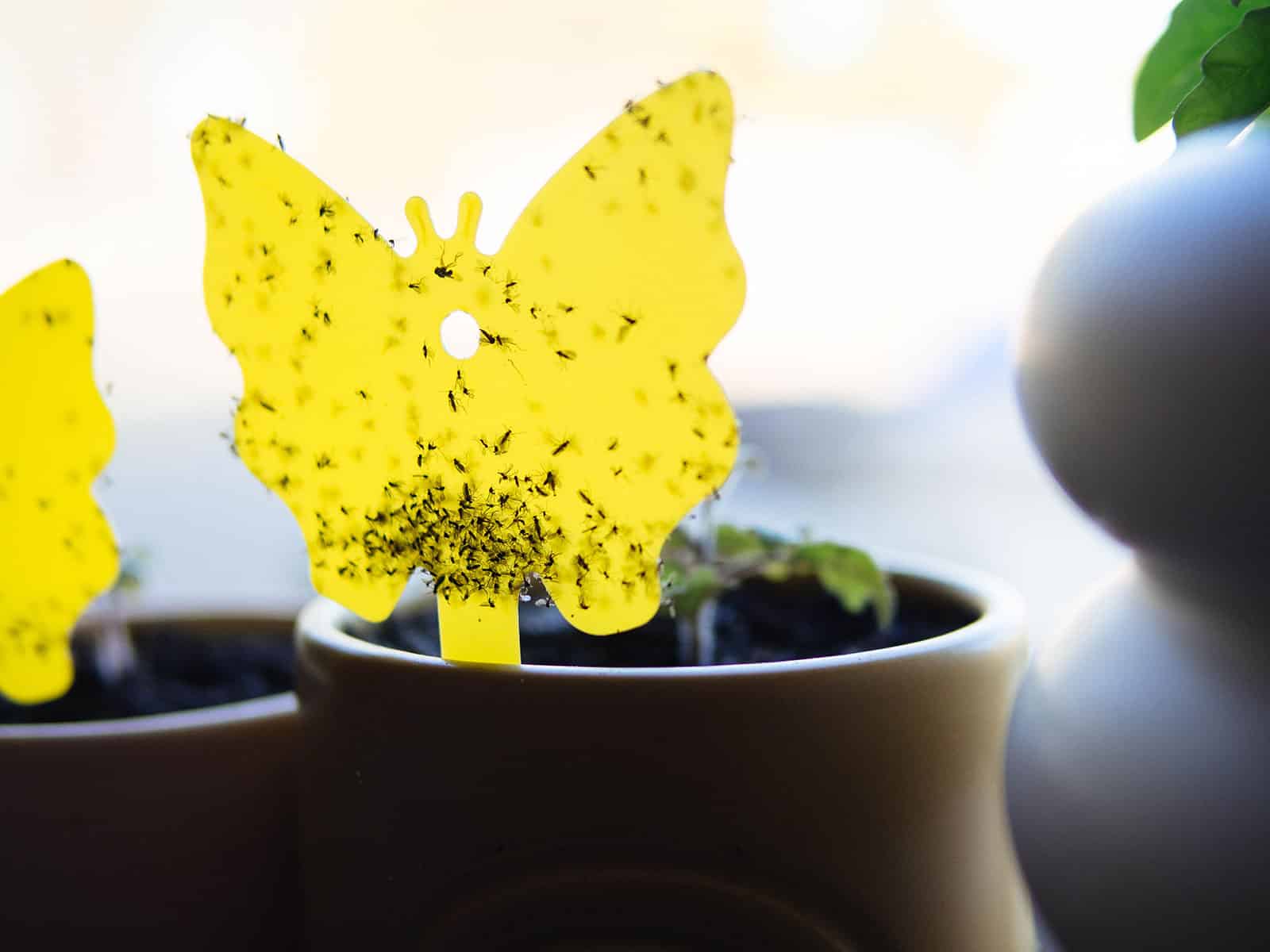
In just a couple of days, you can catch a lot of gnats! (As you can see in the image above of my own houseplants.) Once the sticky trap starts getting full, discard it and place a new one in your pot.
4. Place homemade vinegar traps around your plants.
There’s nothing a fungus gnat loves more than the sweet, sweet scent of fermenting organic material. As with fruit flies, a homemade vinegar trap can therefore work wonders to reduce the amount of adult specimens flying around.
It’s dead simple:
- Fill a small glass with some (apple cider) vinegar.
- (Optional) Add a drop or two of dish soap.
- Cover with plastic film.
- Poke holes in the film that are large enough for a gnat to pass through.
- Place around affected plants.
5. Buy (or make) insecticidal soap to use as a natural pest spray.
If you’re having trouble getting rid of fungus gnats but don’t want to jump to using heavy pesticides, insecticidal soap may be a helpful solution. It’s made of natural materials and is biodegradable, but it still does a number on gnats and other bugs.
You can buy insecticidal soap in most plant shops, although making your own with pure castile soap can be pretty efficient as well. Here’s my recipe for homemade insecticide using just two household ingredients.
Spray liberally on the soil and all over the plant. Repeat whenever it’s time to water so you catch the gnats in all their life stages.
6. Use neem oil spray.
Neem oil is another natural insecticide that works well against a variety of houseplant pests, including fungus gnats.
If insecticidal soap isn’t working for you, you can give neem a try. It smells a bit funky and does leave some residue, but it can be quite effective.
You can buy pre-diluted neem oil or opt to purchase a concentrate and mix it with water yourself. Use an old spray bottle to spray the foliage with the mixture on a regular basis and apply liberally on the soil until the infestation appears under control.
7. Sprinkle Mosquito Bits over affected soil.
Another natural option you can try is a product called Mosquito Bits. The granules contain a bacteria that is deadly to insect larvae, but doesn’t harm other organisms.
To use Mosquito Bits, just sprinkle them over the soil in the affected planters. The bits will dissolve as you water, gradually spreading into the soil and killing baby fungus gnats.
8. Use hydrogen peroxide as a soil drench.
I sometimes like to use hydrogen peroxide as a soil bug killer because it doesn’t just get rid of fungus gnat (and other) larvae, it also offers the additional advantage of releasing oxygen into the soil as it breaks down. And as we’ve learned, plant roots do thrive on plenty of oxygen!
You can buy a 3 percent hydrogen peroxide solution at your local pharmacy. Mix it with 4 parts water and drench your plant’s soil with this mixture.
No worries if it fizzes: that means it’s working. Repeat regularly to get the gnats in all their life stages.
9. Sprinkle diatomaceous earth on the soil.
Here’s another natural, non-toxic option for eliminating fungus gnats. Diatomaceous earth is a powdery substance that consists of the fossilized remains of diatoms (unicellular algae). Because the microparticles are very sharp, they can kill bugs upon contact by penetrating their exoskeletons and causing them to dehydrate.
You can buy food-grade diatomaceous earth from any garden center and sprinkle or dust it onto dry soil. (Do not use the diatomaceous earth that’s meant for filtering swimming pools.)
It’s best to wear a mask so you don’t breathe in the particles. Repeat regularly and you’ll find the gnat population dwindling.
10. Deploy beneficial nematodes.
You may have heard of microscopic soil-dwelling roundworms called nematodes. But don’t nematodes eat plant roots and kill plants, just like fungus gnat larvae?
Well, some of them do. Others have found a different source of food, namely, other worms and larvae.
Killer nematodes (what we call beneficial nematodes, since they’re good for our gardens) parasitize fungus gnat larvae. If you release them into your plant’s soil, they’ll seek out the larvae, enter them and cause them to die. Then, they eat the corpses (hardcore, right?).
This abundance of food allows the nematodes to reproduce and eat more larvae, until eventually the gig is up and they die off themselves. The plant itself is none the worse off for any of this carnage going on in the soil.
If you’re wondering where you can find these magical bugs, I’ve got good news. They’re sold online! This is the exact type of beneficial nematode I use (Steinernema feltiae) to control gnats, and to be honest, I’ll often go straight to this solution if I’m dealing with a serious gnat problem. It usually takes just two applications to get things under control!
It is a pricier solution, but if you don’t want to mess around for weeks while gnats are flying all over the place, this is the way to go.
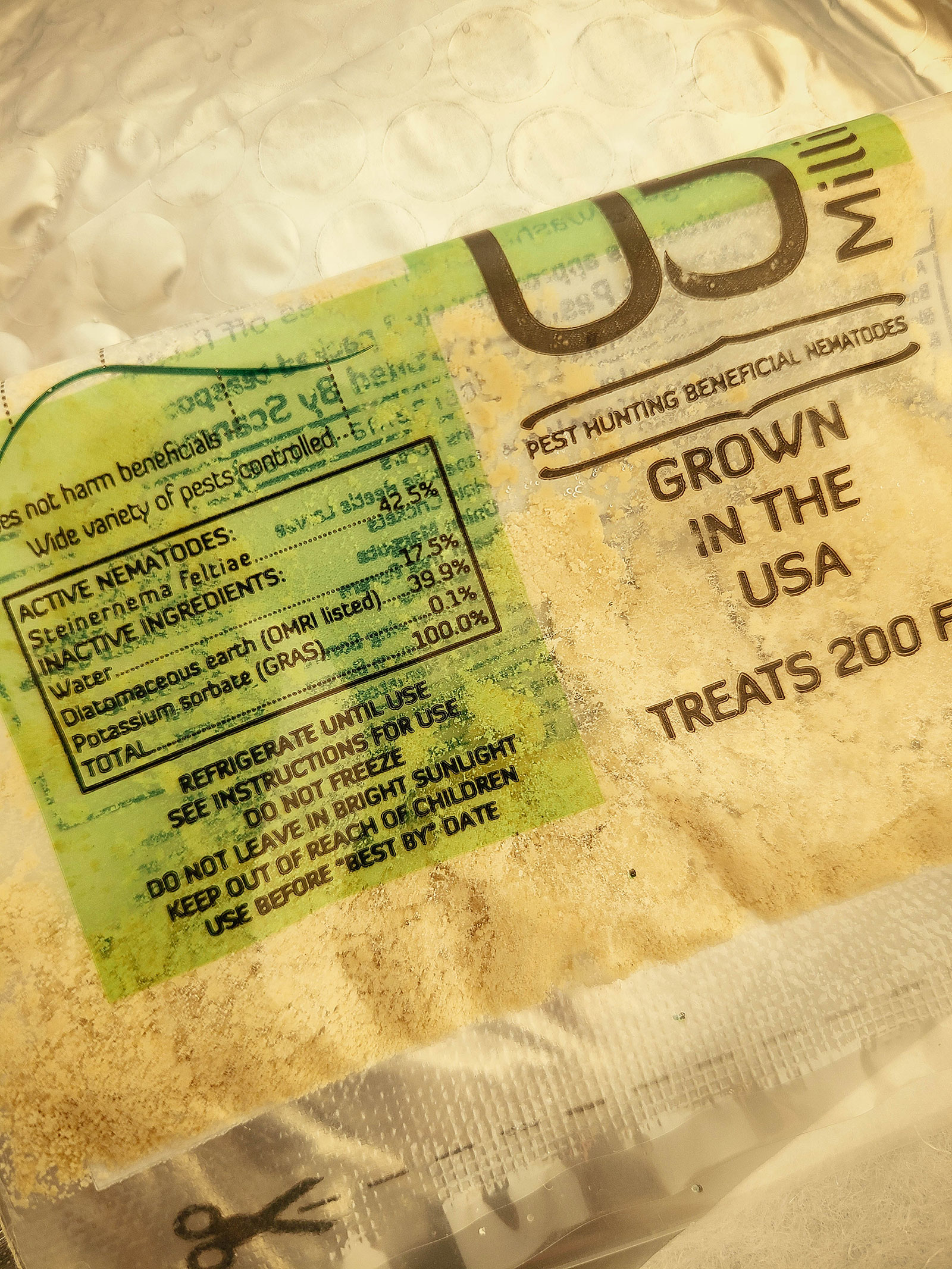
The beneficial nematodes are shipped with insulation and ice packs and should stay refrigerated until you’re ready to use them. Follow the instructions on the package to release them in water so they can do their job (it’s as easy as stirring them into your watering can).
11. As a very last resort, use systemic granules.
Using “real” pesticides is not everyone’s cup of tea. I also don’t think it’s necessary in the majority of fungus gnat infestations, as they almost always can be stopped by the time you reach solution #10 (using beneficial nematodes).
However, if you’re really fed up and need to deal with an infestation stat, you might consider using systemic pesticide granules.
You use these granules by adding them to the soil. Watering spreads them throughout the medium and allows the plant to absorb them, making its roots actually toxic to the hungry gnat larvae. Bye, gnats!
Note that you should never use systemic granules on any edible plants, such as herbs or fruit trees that you grow as houseplants, or edible plants that are overwintering inside your home.

The cinnamon debate
Some houseplant lovers swear by it, others say it doesn’t do anything at all: sprinkling cinnamon on the soil as a means of controlling fungus gnats. The idea is that cinnamon is antifungal and therefore kills off the fungi the gnat larvae feed on, leaving them to starve.
Cinnamon is indeed antifungal. However, scientific studies unfortunately haven’t been able to confirm it works all that well as a natural insecticide, and I personally don’t recommend it.
Still, some folks report success, so you could try it if all else fails, especially in combination with some of these other methods mentioned above.
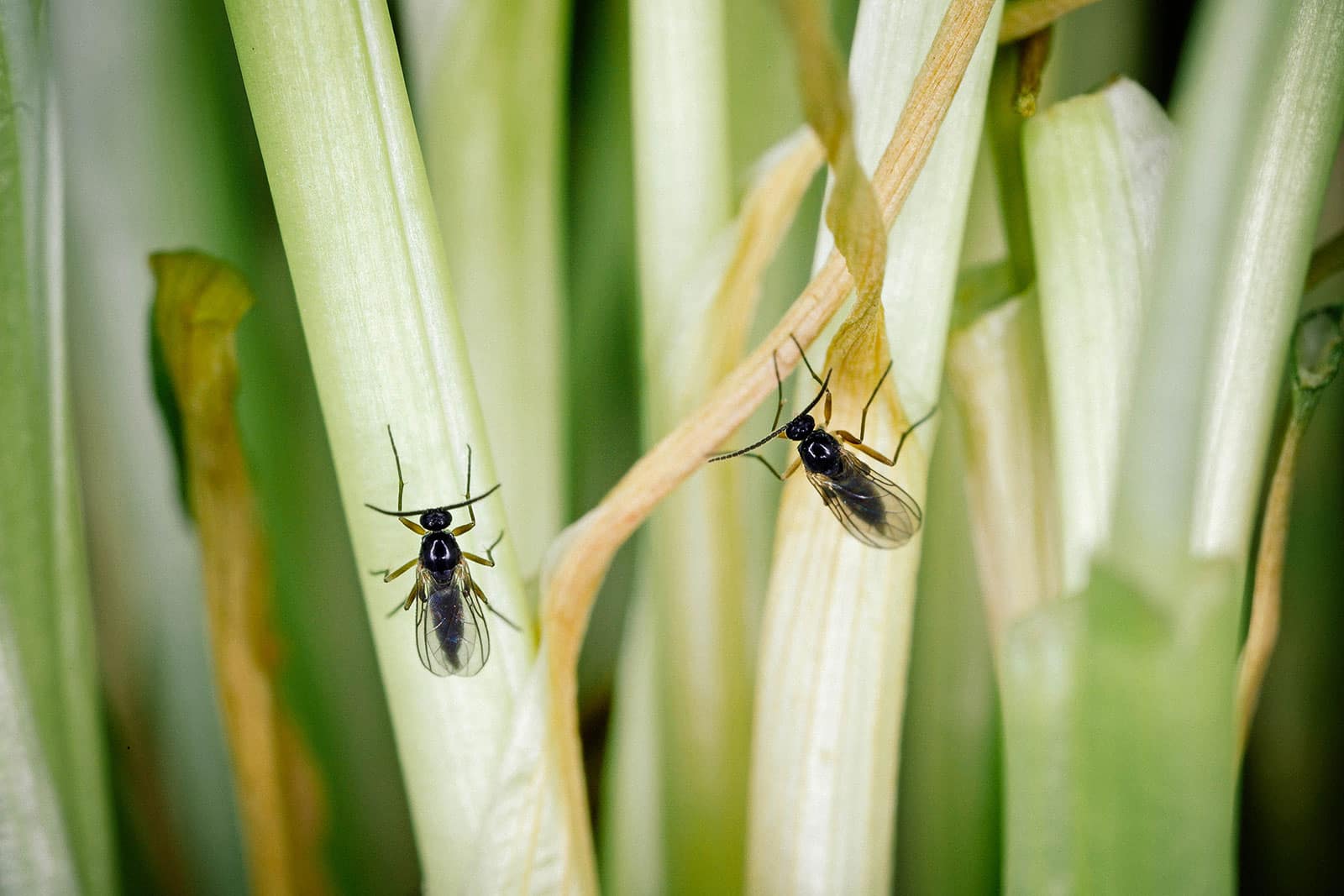
How to prevent gnats in the long run
Now that your plants are gnat-free, it’s important to take steps to prevent them from reappearing. Prevention is much easier than treatment, and you can keep things under control just by following a few simple guidelines.
Soil moisture
Yep, as mentioned, the key to a life without gnats is to avoid creating an environment in which these bugs can thrive. No moist soil, please!
And I know what you’re thinking—Won’t my plants die of thirst?—but the truth is that no, they’ll be fine. Trust me: I treat all of my own plants like succulents, letting them dry out quite a bit, and I’ve got happy and 100 percent gnat-free plants.
I can’t tell you exactly how much to water your plants, as that depends completely on factors like lighting, temperature, and soil composition. What I can tell you however, is that there should be regular periods where the soil feels dry to the touch.
Don’t blindly water on a schedule, but actually inspect the soil to verify whether your plant really needs a drink. (You can use your finger to check or a soil moisture meter like this one, which is the same one I use.)
Unless you’re dealing with moisture-addicted plants (something like a maidenhair fern, a true drama queen), letting at least the top of the soil dry out is not a problem. It doesn’t just help prevent gnats, but also lessens the chances of deadly root rot and other problems taking hold. It’s all about finding that balance!
Remember that in winter, most houseplants go (partially) dormant. Less light and lower temps mean they don’t use as much water, so adjust your watering schedule accordingly.
A plant that wants water every other day during summer may only need a drink every week to week-and-a-half in the dead of winter. As long as its leaves don’t go limp, it’s not overly thirsty yet.
Quick tip
You should always use a planter with a drainage hole in the bottom. You can use a saucer underneath to catch the excess water.
Soil aeration
Fungus gnat larvae love nice and dense, compacted soil. It stays moist longer, and it’s easier for them to navigate without annoying air pockets that impede their movements.
Houseplants, on the contrary, love a looser soil type with lots of air pockets. It allows excess water to drain and plenty of oxygen to reach their roots. As you can see, soil aeration is a win-win. Gnats hate it, plants love it!
And luckily, keeping your plants’ soil medium nice and airy is not difficult at all. In the garden, bugs like worms would take care of this for you, but indoors, you’ll have to take up the role of aerator yourself.
Here’s how you make sure your plants can always enjoy airy soil:
- Avoid using pure potting soil. Instead, add at least 10 percent to 20 percent larger, loose particles like perlite or orchid bark.
- Regularly aerate the soil. Use a chopstick to carefully poke into the medium, moving it around a little to create air pockets and allow water to penetrate deeply but drain easily.
- Repot every one to two years, as overly decayed soil can become compacted.
Bottom watering
Okay, so now you know that fungus gnats love damp soil. Dry soil would prevent infestations, but our plants do need water.
Solution? You water the plants from the bottom. This way, they get the moisture they need, but the top of the soil stays relatively dry. This should hopefully make them less attractive to gnats.
Many houseplant owners swear by this method, called bottom watering. It basically involves placing your plants’ pots in a few inches of water (in a sink or tub, for example), so the soil can soak up the moisture through the drainage holes over the course of an hour or so.
Although it’s not a magical anti-gnat solution, bottom watering can be an excellent addition to your arsenal of bug-preventing measures.
This post updated from an article that originally appeared on December 13, 2023.


